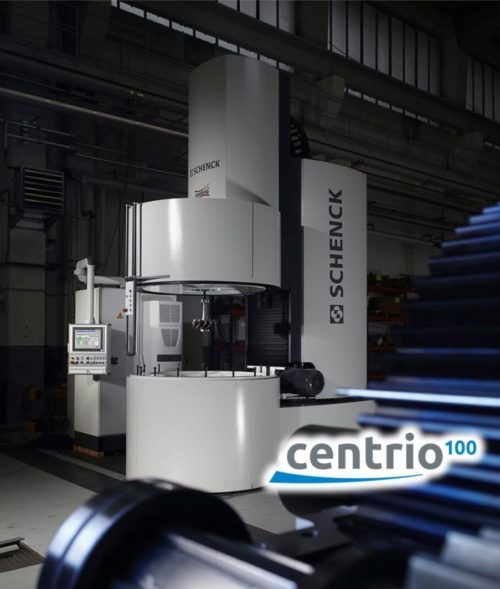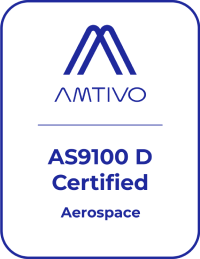Spin Testing Improves ePropulsion Rotor Design
Developing sustainable transportation solutions is an increasingly high-priority goal in the aviation industry. Amongst the emerging contenders of electrified aircraft, exciting trends include the development of delivery drones and air taxis (eVTOLs). These new vehicles are designed to fly at low altitudes over heavily populated areas, requiring focused attention on its electric propulsion systems for noise minimization and design redundancy that provides safe-to-fail measures.
The demand for more efficient and power-dense electric propulsion systems is set to increase steadily. To make them flight-worthy, makers of propulsion systems must fulfill the airworthiness requirements, which typically require rigorous analysis and validation testing.
Test Devices by SCHENCK supports these emerging technologies with industry-leading spin testing services. These services aid in design development and the eventual certification of ePropulsion rotors. This article will discuss the types of spin tests involved in electric propulsion testing, the benefits associated with these services, and what the future holds for eVTOL certification.
What is a Spin Pit?
 The rotating parts in eVTOL motors are critical to safety and operation, and they must be thoroughly tested before they can enter into service. Typically for a flight-worthiness certification, critical rotating parts in aircraft are tested for their structural integrity and fatigue durability. Whether it is an overspeed test or Low Cycle Fatigue (LCF) test, the parts are pushed close to their strength and durability limits, and it is not uncommon for them to fail during the test. High-speed rotors store a significant level of kinetic energy, and they often fail suddenly and violently. If not prepared, the rotor failure event could result in a catastrophic event.
The rotating parts in eVTOL motors are critical to safety and operation, and they must be thoroughly tested before they can enter into service. Typically for a flight-worthiness certification, critical rotating parts in aircraft are tested for their structural integrity and fatigue durability. Whether it is an overspeed test or Low Cycle Fatigue (LCF) test, the parts are pushed close to their strength and durability limits, and it is not uncommon for them to fail during the test. High-speed rotors store a significant level of kinetic energy, and they often fail suddenly and violently. If not prepared, the rotor failure event could result in a catastrophic event.
A spin pit is a purpose-designed machine specialized in testing high-speed rotors safely.
At Test Devices by SCHENCK, we perform various types of spin tests for electric propulsion rotors by using our purpose-designed spin pit. The latest model of Schenck’s Centrio 100 spin tester features a fortified test chamber designed to contain hazardous rotor bursts and their subsequent fragments while offering many automated features to streamline the setup and execution of tests. The system also offers various test conditions (ex. elevated temperature conditions) and advanced data measurement options (such as a rotor expansion measurement system).
Why Spin Test?
Compared to other testing methods, spin testing reveals important data about rotor design. Some of the key benefits of spin testing include:
- Cost and schedule benefits. Since spin testing tests the rotor by itself, there is no need for additional auxiliary hardware such as the bearings, stator, or VFD. Compared to a full-system test, spin testing offers a more pragmatic and economical method to set up the desired test conditions and instrument the rotor for data measurements. This is especially true when a rotor needs to be tested outside of its typical design envelope.
- Risk management. As explained earlier, the spin pit addresses the safety risks associated with a rotor burst. In addition, spin testing also alleviates the risk of premature test termination from the failures of auxiliary systems or parts.
- Early phase evaluation. Spin testing allows engineers to test variations of rotor design separately from other components or subsystems. Doing so enables engineers to generate useful engineering data to fill the information gap and optimize the rotor design. The data can be used to mature the numerical model, accelerate design maturation, and boost confidence in first article success.
Spin tests provide critical data and information to evaluate the performance, safety, and operation of critical rotating parts. Doing so saves time and helps to avoid costly and painstaking investigative work that could emerge as a result of partially validated rotor designs. Partnering with an industry expert like Test Devices by SCHENCK can help you bridge the information gap and accelerate your product development cycle.
Types of Spin Tests
When testing ePropulsion rotor design, there are three types of spin testing methods: overspeed, burst, and LCF testing. Each of these testing services offers unique information on the durability and structural integrity of a rotor’s design.
Overspeed Test
Also known as a proof test, the goal of an overspeed test is to validate structural stability and integrity. Overspeed testing is performed by spinning a rotor above its typical operating ceiling. During the process, the rotor will be examined for several changes in behavior:
- Linear elastic or plastic deformation
- Changes in unbalance level
- Changes in the rotor outer diameter (OD) profile
As a result of this testing process, we can help minimize the risk of unexpected rotor dynamic instabilities and confirm the rotor’s structural integrity.
Burst Test
A burst test involves spinning a rotor until it ruptures under a centrifugal (CF) load. The goal is to observe and confirm the limit and the failure mode of the rotor, as this information is key for improving its safety and structural integrity. During a burst test, a high-speed video camera setup within the spin pit captures imaging of the burst event. An in-depth understanding of the rotor’s failure mode can give key insight into a better-performing design.
Low Cycle Fatigue (LCF) Test
LCF testing is an important method of evaluating a rotor’s durability. It involves cycling the rotor through tens of thousands of speed cycles, either in ambient or elevated temperature conditions.
The test temperature for electric motor LCF test is typically in a low threshold (200°F-500°F). However, this does not diminish the importance of accurately controlling the test temperature, as its effect is relative to the material property of the rotor. At Test Devices, we take extra care to avoid unintentional heat damage that could compromise the accuracy of the test result.
Benefits of Using Test Devices by SCHENCK’s Spin Testing Services for ePropulsion
At Test Devices by SCHENCK, we offer everything you need for ePropulsion rotor testing and balancing. Our extensive background in spin testing for ePropulsion systems delivers many benefits for our clients, including:
- Full engineering support from test concept development to project management and final reports
- Access to a world-class testing facility with an onsite machine shop for expeditious hardware adjustments
- Test instrumentation expertise, including expansion measurement and high-speed video imaging
- Pre- and post-test inspection capabilities, including balance measurements and CMMs
- Testing standards that adhere to the AS9100 aerospace standard
The Future of Spin Testing for Electric Motors
Modern spin testing techniques for electric motors offer valuable data for accelerating and advancing state-of-the-art rotor designs for high-performance electric motors. eVTOL motor rotors are complex assemblies that feature composite structures (vs. homogenous) that make them difficult to model.
The data from spin testing bridges this information gap, serving as a proven technique for CF load testing and offering a variety of test environments and data measurement options. The data derived from spin tests enhance rotor safety while helping tune the analytical models and deepen the understanding of rotor behavior and failure modes. Spin tests also allow earlier testing to be performed, eliminating assumptions and uncertainties while smoothing the path toward eVTOL certification.
Spin Testing Services From Test Devices by SCHENCK
Test Devices by SCHENCK is a global leader in balancing technologies and high-speed rotor engineering. Our spin testing services are a critical element of manufacturing high-quality rotating parts that deliver greater efficiency and increased service life. As a partner in climate-neutral mobility, we can help you develop eMobility solutions that reduce environmental pollution and noise emissions. For more information on our electric motor testing services, contact us or request a quote today.






